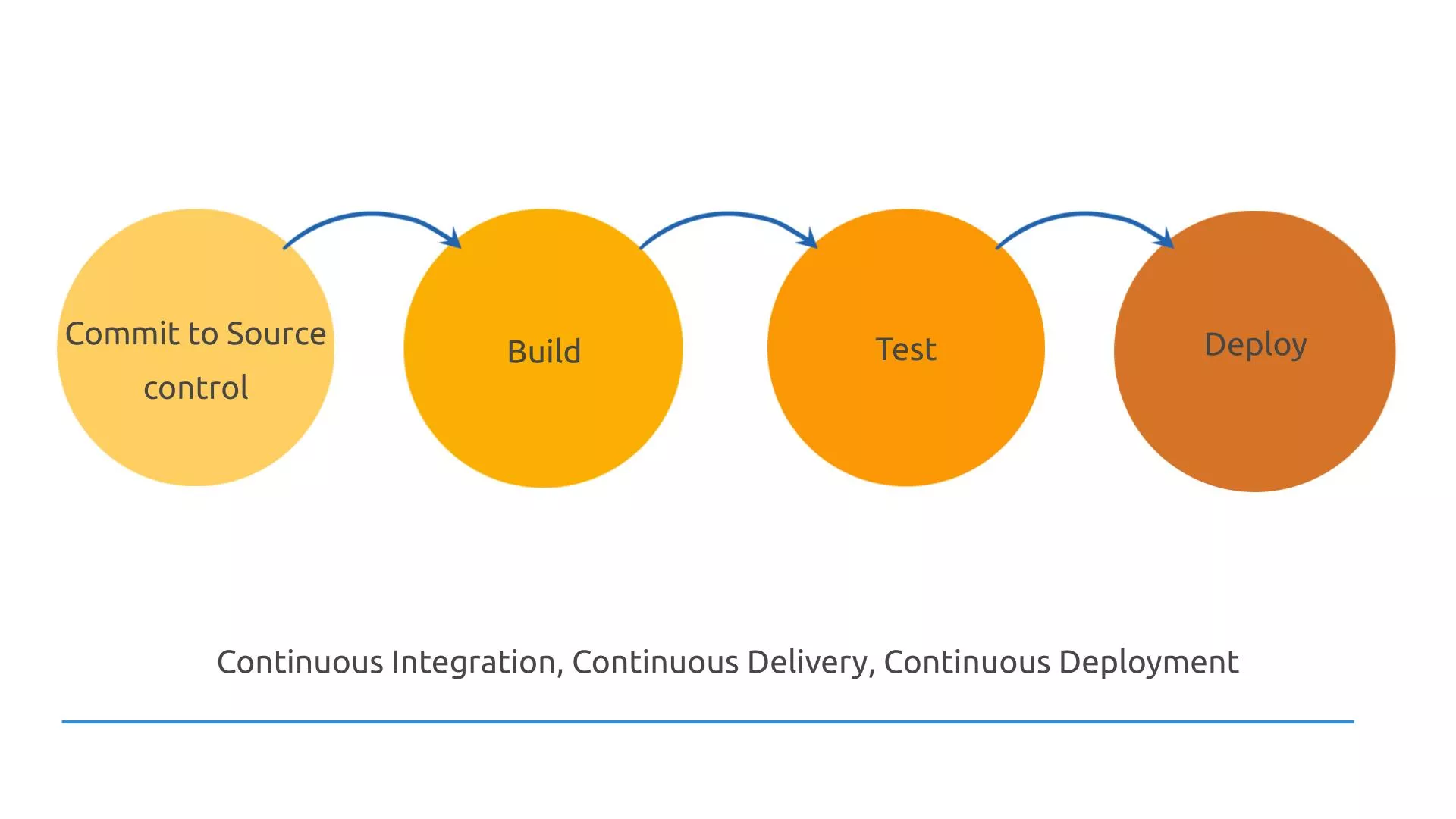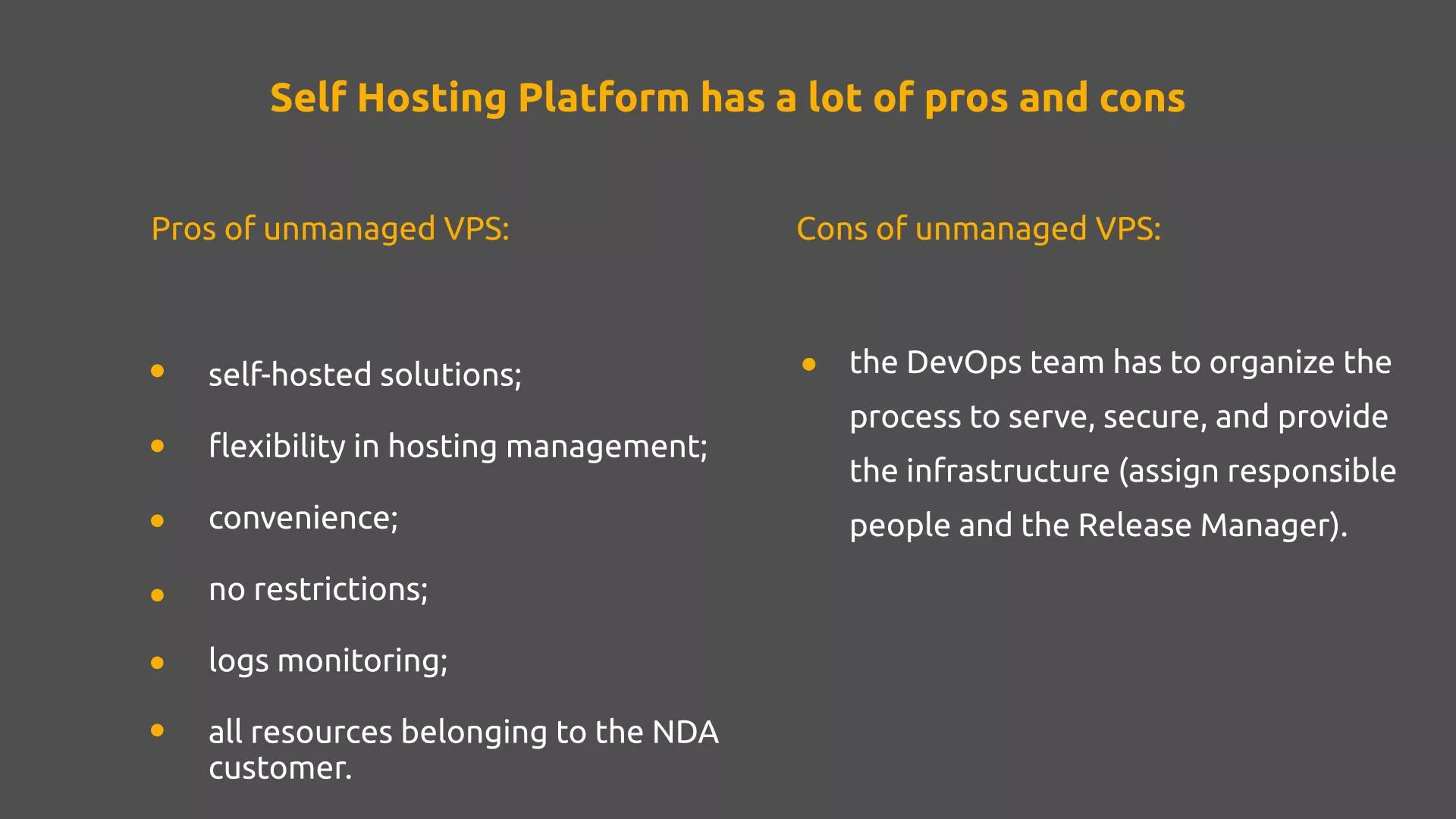Hosting Platform
Working on big sites requires the involvement of many specialists working in different environments. That's a lot of people, including professional architects, developers, managers, and QA. For these people to interact, develop, and improve the structure of a site (or even several sites at the same time), a Hosting Platform is needed.
Some companies choose to outsource hosting, but for some, it is possible to develop their self-maintained, which will add flexibility, and independence from outsourcing companies.
What is a Hosting Platform?
A Hosting Platform is a tool that helps help organize all the staff with pull requests, deploying servers, and deploying site updates.
This is required for quick updating of data, and for flexible management of environments. The worldwide websites also can have their own Hosting Platform instead of outsourcing the platforms of other companies. Enterprise hosting can be made with the whole team that will work on it. The Hosting Platform works with different environments and has its own dedicated server.
A team of professional developers and architects is able to help web-development companies create their own hosting platform and organize a team that will serve it. But for this, you need to take a number of actions, which are related to the collection and distribution of data, and training of the team working on the site. Also, there is important to the improvement of work processes with VCS.
For example, let's take the worldwide websites that serve millions of users.
Some of them outsource hosting platforms but lack the flexibility to use them. Such sites can be transferred to their own hosting platforms. All servers at this time can be located at any VPS Hosting Provider.
But among the tasks is not only the creation of a hosting platform but also the organization and adjustment of all processes for conducting work on the site.
Transferring a site from one hosting platform to another requires a number of system updates.
Git – VCS
A software repository – is a system for working on code, where everyone has access to updated code. To collect all of the updating data, with which every day the teams worked, can be used GIT system. Git is a code repository. which helps the whole team to develop the code. It is used to verify the code on the hosting platform. GIT helps to synchronization of code, and all folders between developers.
To work on code changes does not affect the business and do not harm the site, all changes must be tested. A branch can help to make a copy of the project where changes can be made, but they will not affect the main project. The new functionality will be available only when it is fully tested by QA professionals. This will help to avoid many troubles. Merging of branches can be done after all developers, QA, and architects will be sure, that the code is ready.

What is Jenkins?
Jenkins is an open-source Java program. It allows you to automate part of the software where human assistance is not required. At the same time, it provides the function of continuous integration. The aim is to increase early defect discovery and productivity and provide faster release cycles. Jenkins cookbooks can be implemented with the code repository and available for enhancements by demand. Jenkins provides the flexibility to grant access to a built-in environment.
By Git-system the teams will Commit to Source Control.
By Jenkins, they can Build and Compare code.
Also, Jenkins will help to do code tests, just to make sure, that everything is going well.
The last part will be the Test Deploy.
When several different teams work on the same project, there should be a culture of using tags and releases.
CI/CD
Continuous Integration (CI) includes Commit to Source Control, Building/Comparing code, and tests.
Continuous Delivery, Continuous Deployment (CD) includes all of this + Deployment.
CI/CD could help a team of professional architects and programmers to make changes to the site and fix the code without harming the operation of the site.
Continuous delivery usually means a developer’s changes to an application are automatically bug tested and uploaded to a repository, where they can then be deployed to a live production environment by the operations team. It’s an answer to the problem of poor visibility and communication between the developer’s team and business teams. To that end, the purpose of continuous delivery is to ensure that it takes minimal effort to deploy new code. Continuous deployment addresses the problem of overloading operations teams with manual processes that slow down app delivery.
Self Hosting Platform pros and cons.
There are a lot of variants to create a self-hosting platform for a business. But before it, we have to check all pros and cons and find the best individual solution.

The created Hosting Platform system can be transferred to the development team, considering access. Each of the teams can have its account and corresponding responsibilities. Also, there could be knowledge transfer for the team using it for long period. The process of serving, securing, and providing self-hosting has a generic structure. So big companies can choose that system as a business strategy to grow up.
Our goal is not only to create and run a hosting platform but also to help companies maintain it. It is likely that in the future, the company can manage its hosting platform without the involvement of third-party experts. Independence and flexibility in using a hosting platform are something worth growing towards.